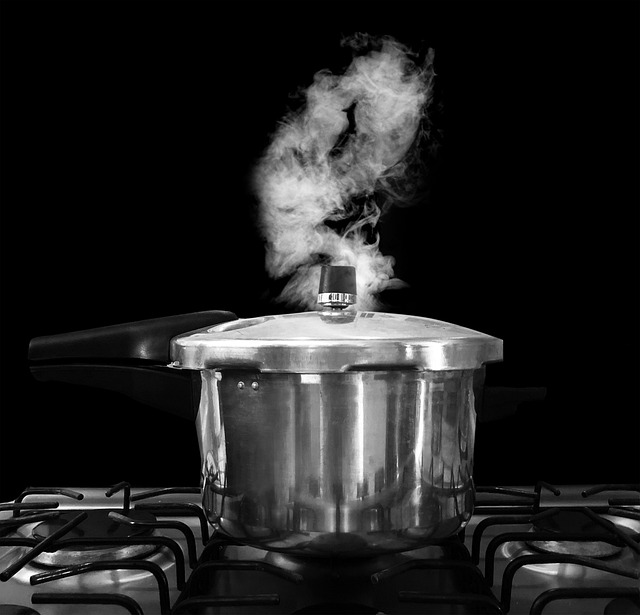Solutions are essential for many applications, ranging from biological systems to industrial processes. How solutes impact solvents, especially when a non-volatile solute dissolves in a liquid, is made easier by a unique combination of characteristics known as colliding properties.
These characteristics are separate since they rely solely on the quantity of solute particles present in the solution, on their specific composition. Determining the molar mass of an unknown solute is one of the most significant uses of colliding properties.
Colligative properties are the properties which depend on the number of solute particles irrespective of their nature relative to the total number of particles present in the solution.
What Are Colligative Properties?
When a solute is added to a solvent, its physical characteristics change, giving rise to colliding properties. Following are the feature:
Relative Lowering of Vapour Pressure
When a solvent is mixed with a non-volatile solute, the solution’s vapour pressure drops. This occurs because fewer solvent molecules escape as vapour when certain solute particles occupy surface sites

Raoult’s Law, which states that a solution’s vapour pressure is directly proportional to its solvent mole fraction, is used to numerically quantify this phenomena.
Elevation of Boiling Point
The temperature at which a liquid’s vapour pressure reaches atmospheric pressure is known as its boiling point.
The addition of a solute raises the boiling temperature because the vapour pressure drops and more heat energy is needed to reach the boiling point.
The formula for this rise in boiling point is ΔTb = Kb × m, where m is the solution’s molality and Kb is the molal boiling point elevation constant.
Depression of Freezing Point
When molecules in a liquid solidify, freezing takes place. This structure is broken by solute, which lowers the freezing point.
The formula for this feature is ΔTf = Kf × m, where Kf is the depression constant for the molal freezing point.
This idea is put into practice in the actual scenario by salting roads to stop ice from forming in the winter.

Osmotic Pressure
Osmosis is the process by which solvent molecules pass across a semi-permeable membrane from an area of lower solute concentration to one of higher solute concentration.
The pressure needed to halt this movement is known as osmotic pressure (π), and it can be found using the formula π = MRT, where M stands for molarity, R for the universal gas constant, and T for temperature in Kelvin.
This characteristic is extensively employed in industrial and biological processes, including water desalination and cell membrane function.
Two solutions having same osmotic pressure at a given temperature are called isotonic solutions.
If one solution is of lower osmotic pressure; it is called hypotonic with respect to the more concentrated solution. The more concentrated solution is said to be hypertonic with respect to the dilute solution.
If a pressure higher than the osmotic pressure is applied on the solution, the solvent is flow from the solution into the pure solvent through the semipermeable membrane and the process is called reverse osmosis. It is used in desalination of sea water.
Determination of Molar Mass Using Colligative Properties
The molar mass of an unknown solute can be indirect using colliding characteristics. The idea is straightforward: we can determine the number of moles of solute and, from there, its molar mass if we dissolve a known mass of solute in a solvent and measure the corresponding effect (such as freezing point depression or osmotic pressure).
The general steps for molar mass determination are:
Determine the colliding property, such as osmotic pressure, freezing point depression, or boiling point elevation.
To ascertain the solute’s molarity or molality, apply the relevant formula.

Determine how many moles are by dividing the solute’s known mass by its molar mass.
To find the molar mass, rearrange the equation: Molar mass is calculated as solute mass divided by solute moles.
For example, using freezing point depression:
Molar Mass = Mass of solute × Kf / ΔTf × Mass of solvent(kg)
Applications of Colligative Properties
Molecular mass determination: This helps to scientists in identifying unknown materials like proteins or big chemical compounds.
Antifreeze Solutions: These keep automobile radiators from freezing.
Food Preservation: Excessive amounts of sugar or salt lower water activity, which restrain the growth of microorganisms.
Medical Uses: To guarantee that IV fluids are compatible with human blood, osmotic pressure principles are applied.
Summary:-
Colligative qualities give us a basic idea of how solvents and solutes interact. They are extremely useful for figuring out the molar mass of unknown substances because of their special ability to rely exclusively on the quantity of solute particles. Colligative characteristics are essential to the world we live in, whether in daily living, industrial uses, or scientific study.
Note:-
Rupture of cell due to inflow of solvent into it is called haemolysis and shrinking of a cell due to outflow of solvent is called crenation or plasmolysis.
Osmotic pressure determined by the apparatus ‘osmometer’.
Relation between osmotic pressure and lowering of vapour pressure: